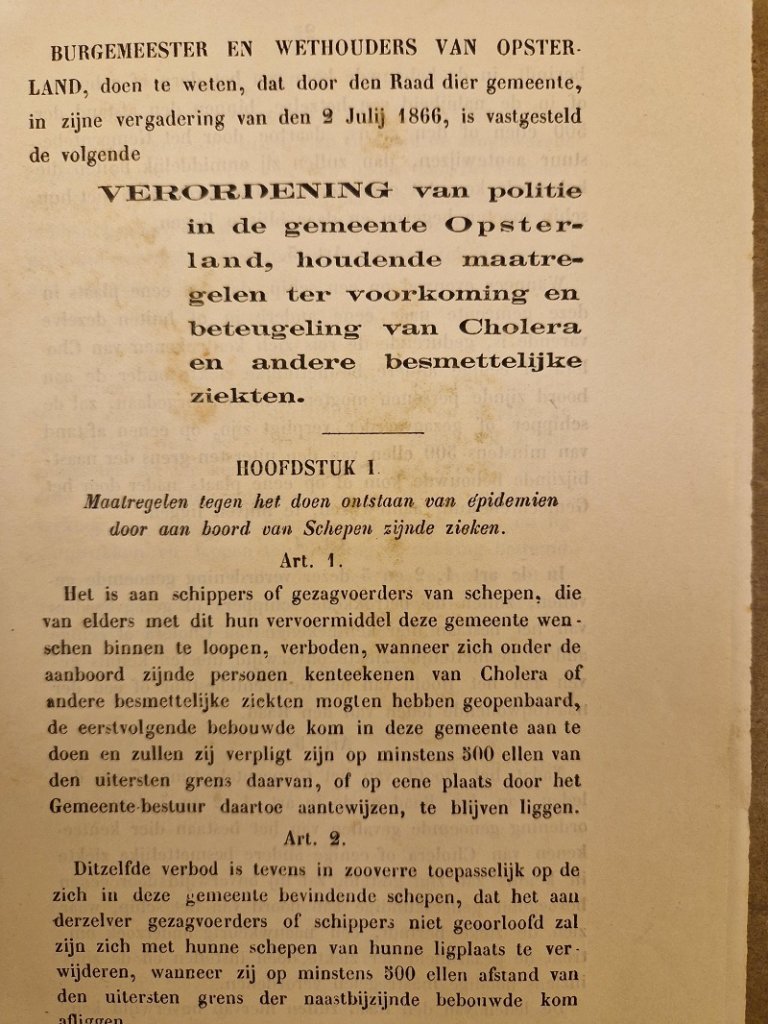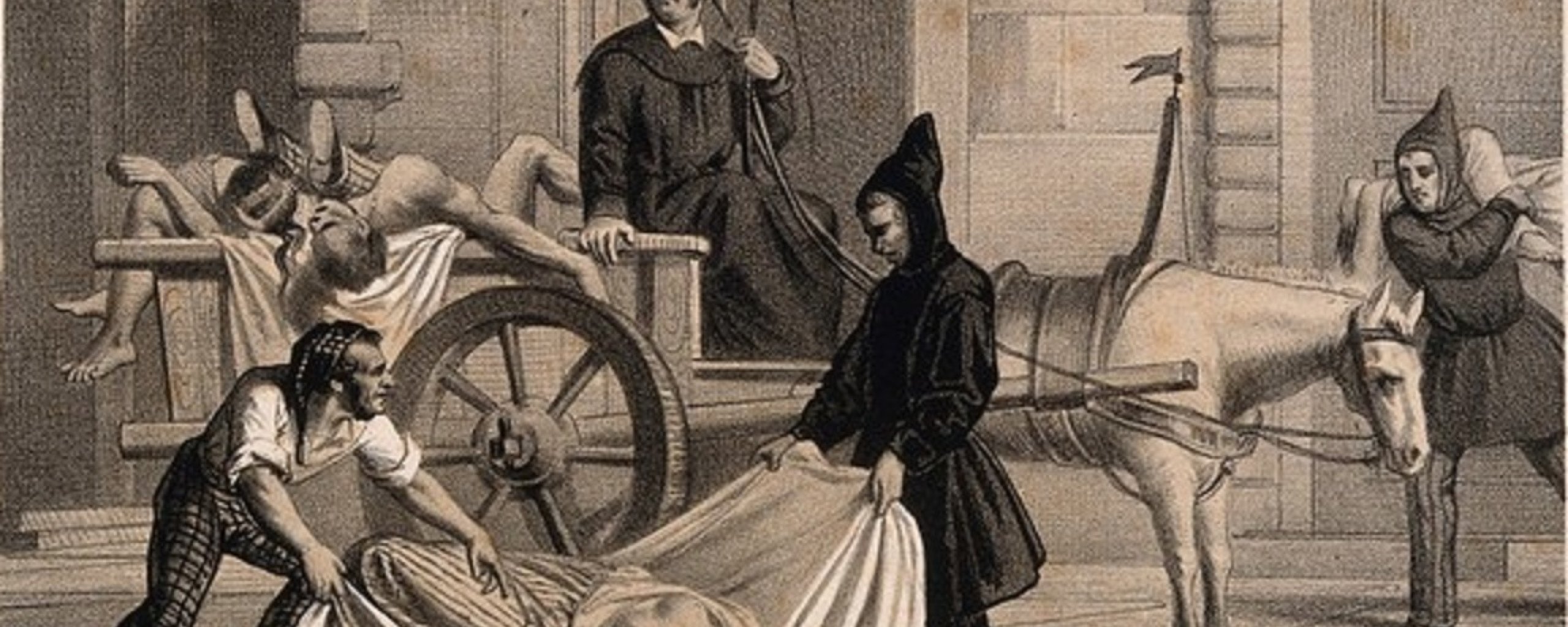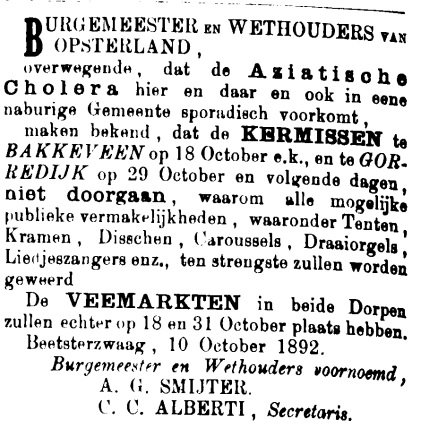
1866: The curbing of cholera
Dive into the history of Opsterland and discover how our municipality fought epidemics such as cholera and smallpox.


For a few years now, corona has become part of our lives. Infectious diseases have been around for a long time and often cause many deaths. The bubonic plague, also known as the Black Death, caused millions to die in the Middle Ages and completely disrupted society. Diseases also had this effect in the nineteenth century. Outbreaks of cholera, typhoid, pneumonia, smallpox, scarlet fever and measles occurred with regularity.
First cholera outbreak in the Netherlands
Cholera was first seen in the Netherlands in 1832. Some butter smugglers who came back to Holland by boat from England brought the disease with them. In 1832 and 1833, 10,108 people died of the disease. In 1849 there was another epidemic that began in Zaandam. There were then 23,267 deaths in the Netherlands due to this epidemic. In 1866, there were 21,286 victims in our country. This outbreak raged particularly in Amsterdam and its surroundings. But many people also died in other parts of the Netherlands, in Groningen, for example, as many as 1,525 people died in the year 1866. Seven pandemics of cholera have been counted since 1800, the last between 1961 and 1975.
Cholera in Opsterland
Governments did their best to prevent the spread of these diseases. Cholera committees were established in cities that tried to contain the epidemic and gave Health to the sick. Local governments and residents donated money for this purpose. Municipality of Opsterland laid down the control of cholera and other contagious diseases in an ordinance in 1866. This "Ordinance for the Prevention and Control of Cholera and Other Contagious Diseases" laid down regulations and measures to contain contagious diseases. Diseases spread, for example, through water, eating contaminated vegetables, as well as where people traveled distances. Therefore, the regulation also includes articles addressing the travel movements of people on ships. Due to experiences with previous epidemics, governments are putting massive effort into prevention measures.


Measures were also publicized through announcements in newspapers. In 1871 it was forbidden for 3 months to display sales and contributions of used clothing and rags intended to make clothes or blankets from them because of the pockmark disease that was prevalent in the municipality. In 1892, the fairs were not allowed to continue and "tents, stalls, disschen, carousels, barrel organs and song singers, etc., were strictly banned.
Cause
In 1854, British physician John Snow discovered that dirty water was the cause of cholera. Infectious diseases were especially common among poorer populations and in densely populated areas. As a result, people realized that sewage and hygiene had to change. These insights spread across Europe and eventually ensured that cholera is actually no longer with us today.
Image gallery
